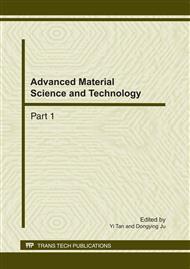p.991
p.995
p.999
p.1003
p.1007
p.1011
p.1015
p.1019
p.1025
Simulation of Axi-Symmetrical Forging Process by “Inverse Approach”
Abstract:
The simplified method called Inverse Approach (I.A.) has been developed by Batoz, Guo et al.[1] for the sheet forming modelling. They are less accurate but much faster than classical incremental approaches. The main aim of the present work is to study the feasibility of the I.A. for the axi-symmetric forging process modelling. In contrast to the classical incremental methods, the I.A. exploits the known shape of the final part and executes the calculation from the final part to the initial billet. Two assumptions are used in this study: the assumption of proportional loading for cold forging gives an integrated constitutive law without considering the strain path and the viscoplasticity, the assumption of contact between the part and tools allows to replace the tool actions by nodal forces without contact treatment. The comparison with Abaqus shows that the I.A. can obtain a good strain distribution and it will be a good tool for the preliminary preform design.
Info:
Periodical:
Pages:
1007-1010
Citation:
Online since:
February 2011
Authors:
Price:
Сopyright:
© 2011 Trans Tech Publications Ltd. All Rights Reserved
Share:
Citation:


